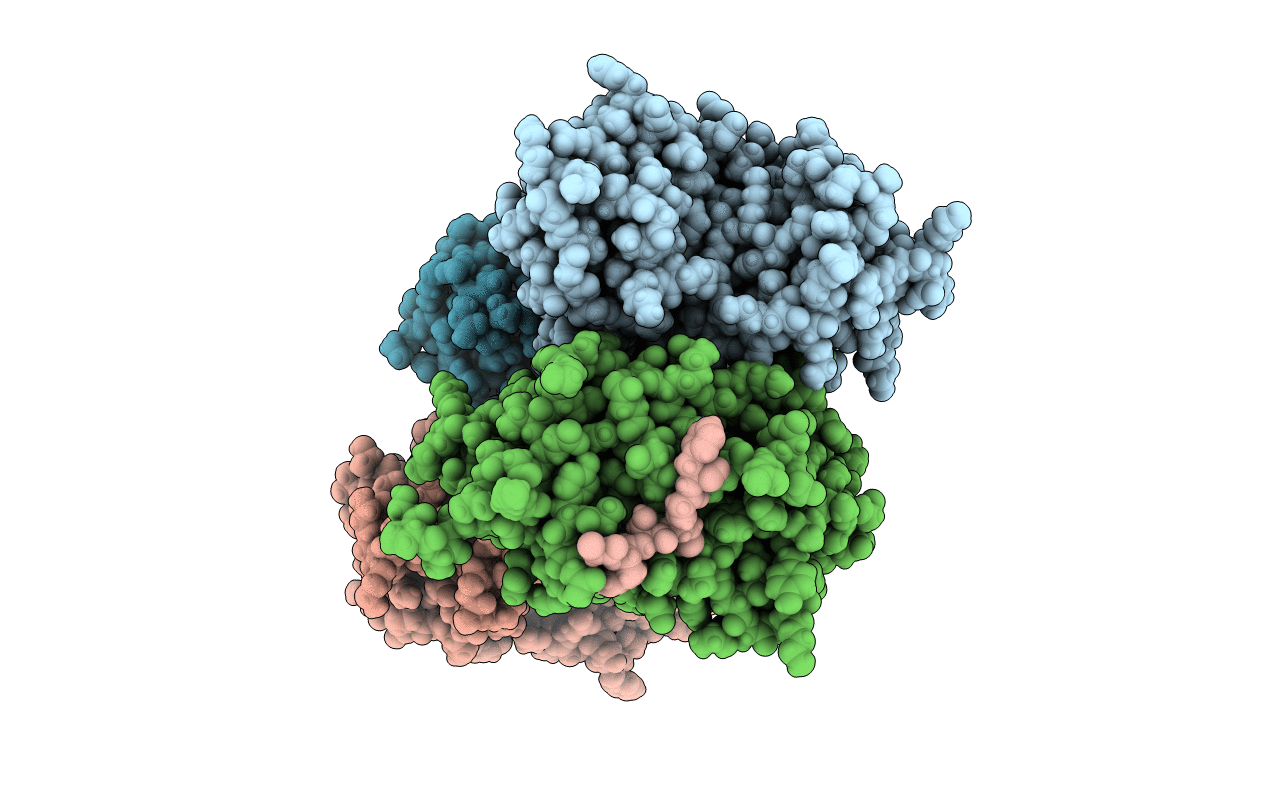
Deposition Date
2017-05-25
Release Date
2018-03-21
Last Version Date
2024-11-20
Entry Detail
PDB ID:
5VYO
Keywords:
Title:
The complex structure of Burkholderia pseudomallei DsbA bound to a peptide
Biological Source:
Source Organism:
Burkholderia pseudomallei (Taxon ID: 272560)
Burkholderia pseudomallei (Taxon ID: 28450)
Burkholderia pseudomallei (Taxon ID: 28450)
Host Organism:
Method Details:
Experimental Method:
Resolution:
2.49 Å
R-Value Free:
0.25
R-Value Work:
0.19
R-Value Observed:
0.20
Space Group:
P 1


